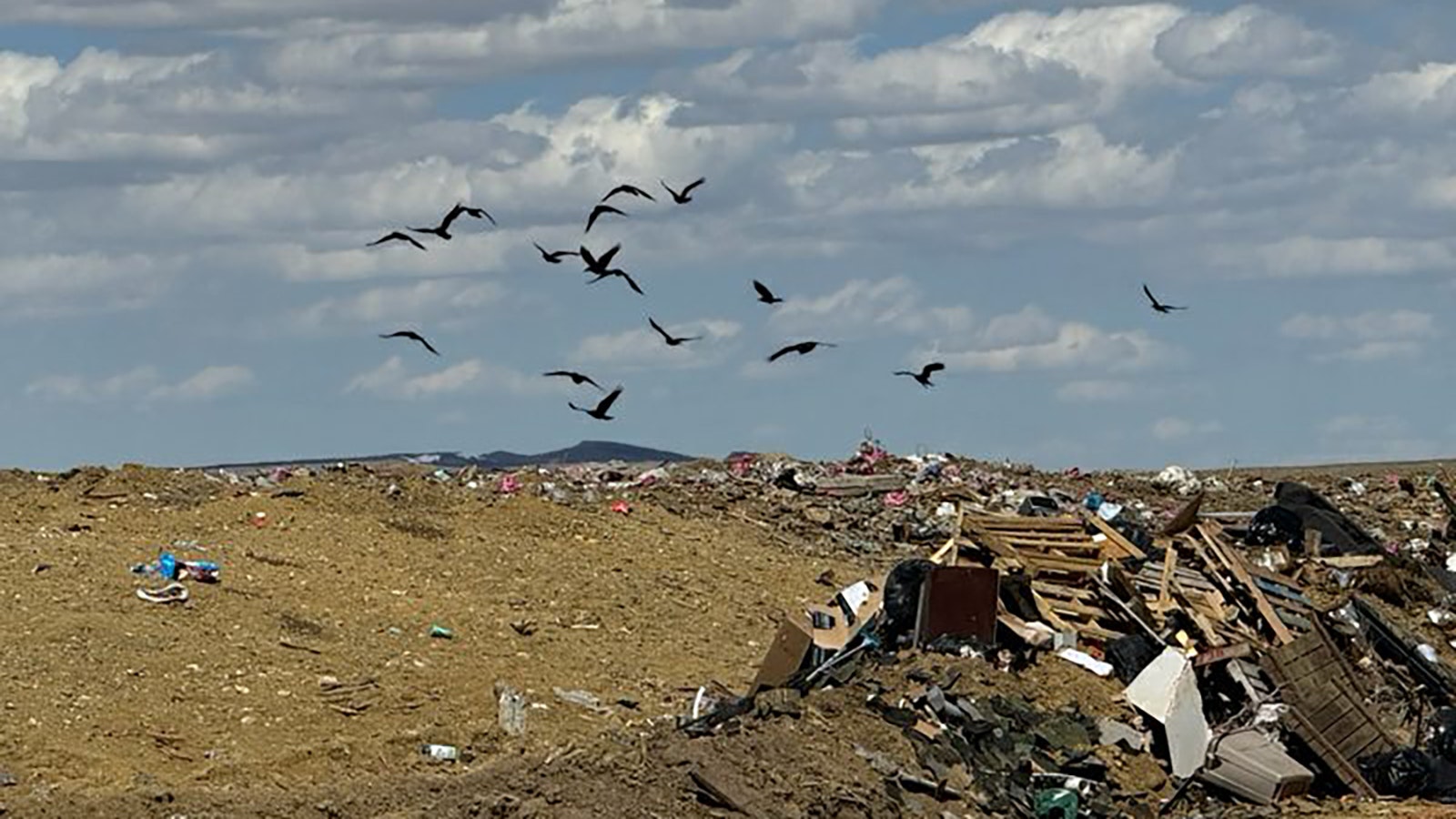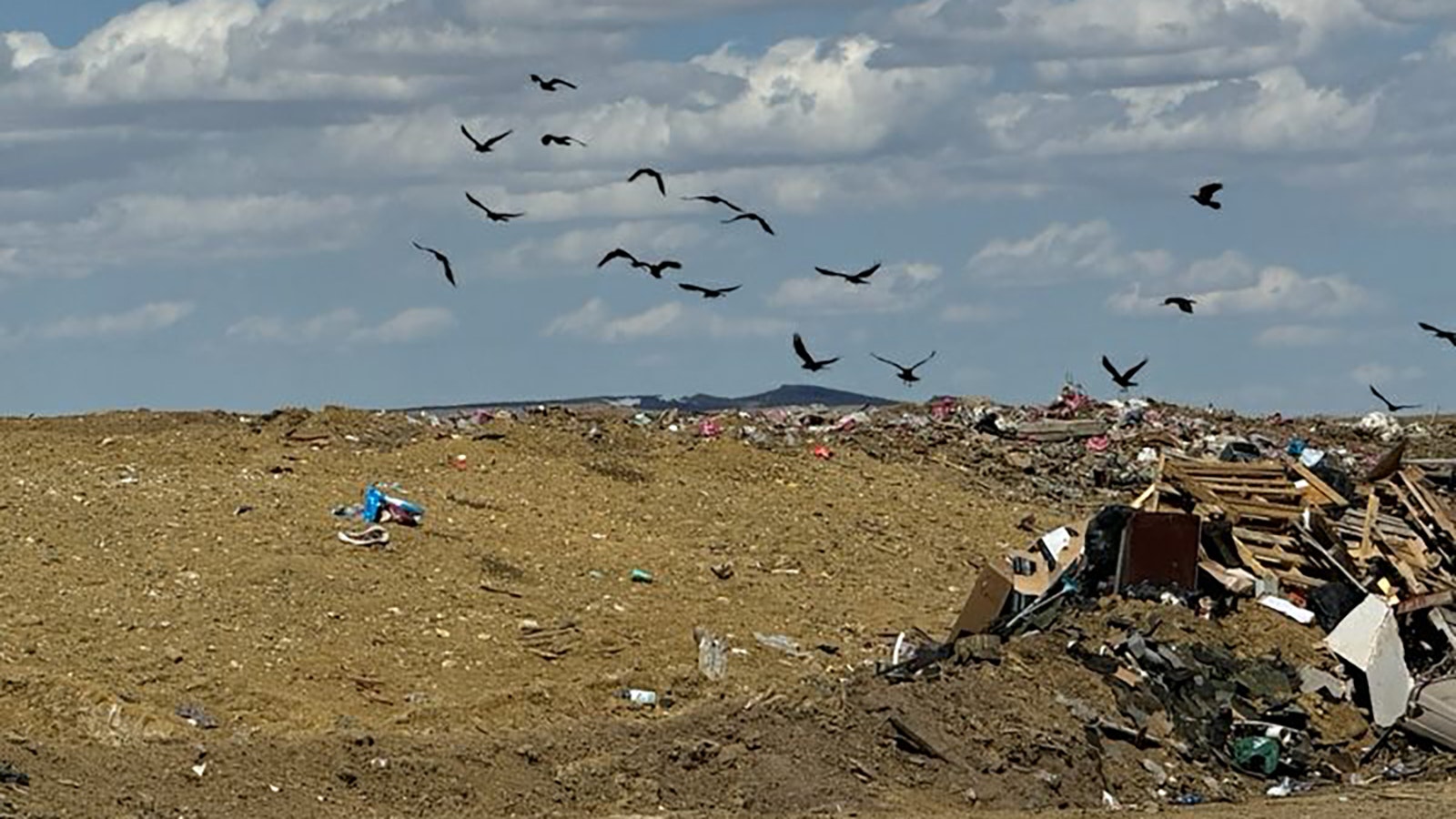In Alfred Hitchcock’s classic 1963 horror film “The Birds,” one of the most iconic scenes shows actress Tippi Hedren smoking at a playground as more and more crows begin to flock to the area.
Over the course of the 2-minute scene, Hedren notices as dozens of crows crowd around the jungle gym and swingset, behaving in a menacing manner.
While the city of Rawlins, Wyoming, isn’t at horror film levels like that featured by Hitchcock, the city’s growing problem with bothersome birds has reached the point of no return for the swarms of ravens living in and around the Rawlins Landfill.
The landfill has been overrun with ravens to the point that city administrators and the U.S. Department of Agriculture (USDA) have partnered for a “raven take permit” to manage the bird population.
Management of this situation will mean using a bird-specific poison, or avicide, to cull the number of ravens. The avicide will be distributed around the landfill in about a week, USDA District Supervisor Brady Smith told Cowboy State Daily.
Site surveys and pre-baiting are taking place, which are conducted to ensure only the targeted creatures are consuming the poisoned bait.
“Once our personnel are confident that only the targeted species are consuming the bait, will we proceed with treatment,” Smith said.

How Many Birds Is Too Many?
Smith said that there are around 100 ravens at the landfill, and city spokeswoman Mira Miller said the birds damaging livestock and equipment around the area.
“There isn’t a specific threshold/number of ravens that initiates a control action; rather, it is the damage or threat of damage, like human health and safety that initiates this response,” Smith said.
Smith said large concentrations of ravens pose a risk to human health and safety because they can transfer various zoonotic (transmitted from animals to humans or vice versa) diseases through fecal contamination.
But they can be a nuisance, if not a disaster, in other ways to their surrounding ecosystem.
“It is rather common to find fecal matter several inches deep where large congregations of ravens roost,” Smith said. “This unnatural abundance of ravens poses a significant threat to wildlife, with sage grouse being of utmost concern.
Ravens are incredibly efficient nest predators and have been documented to be the most significant predator depredating sage grouse nests. Furthermore, in the spring when livestock are born, ravens frequently peck at their eyes, navels or rectums of the newborn animals.
At this time, the city and USDA’s biggest concern is bird flu, which has recently spread among dairy cattle in a handful of states such as Texas and Michigan.
The Poison
Smith pointed out that the avicide, known as DRC-1339, is a bird-specific poison that will not affect humans or other animals that come into contact with it.
“Due to differences in metabolic processes, [DRC-1339] is highly effective in the control of most commonly targeted avian species, like ravens, crows and starlings,” Smith said. “Yet it poses little risk to predatory avian species, such as raptors. Further selectivity is achieved by choosing a bait source that is specific to the targeted species, to which the avicide is applied.”
The birds that consume the avicide will usually die at the roost site anywhere from 12 to 72 hours later. Smith said secondary risks from scavengers aren’t a concern, since the chemical is metabolized within two hours of consumption, thereby effectively leaving no residual chemical in the birds’ carcasses.
“At this time, we anticipate only needing one treatment at this location,” Smith said. “Treated bait will only be put out for one to two days, and all residual, unconsumed bait will be collected and properly disposed of afterward.”





